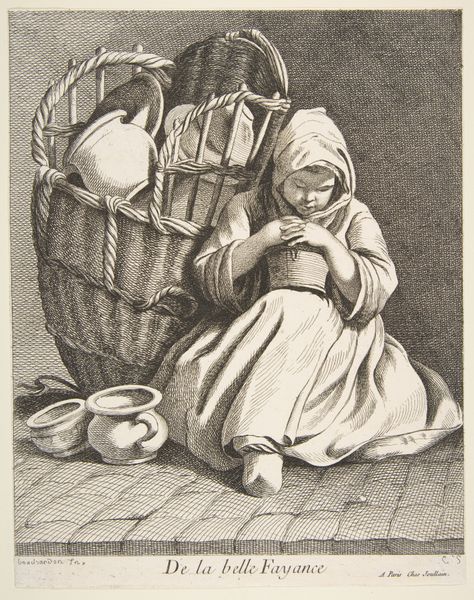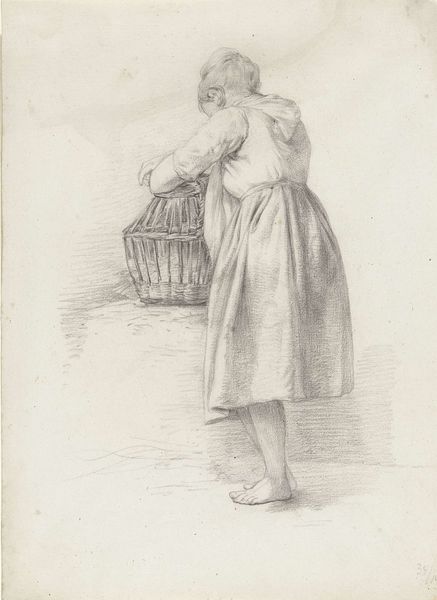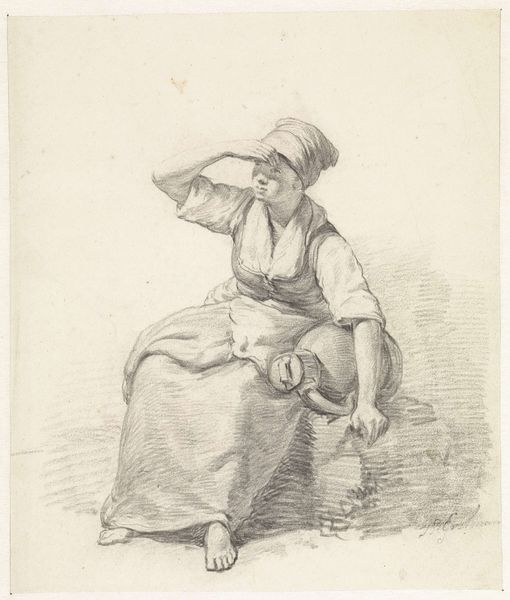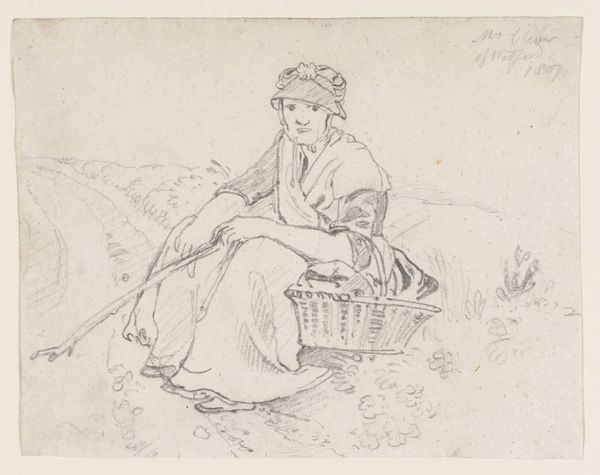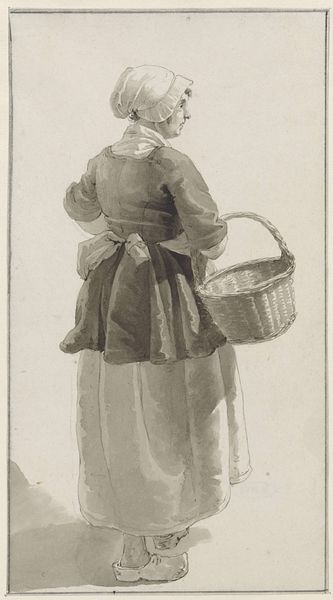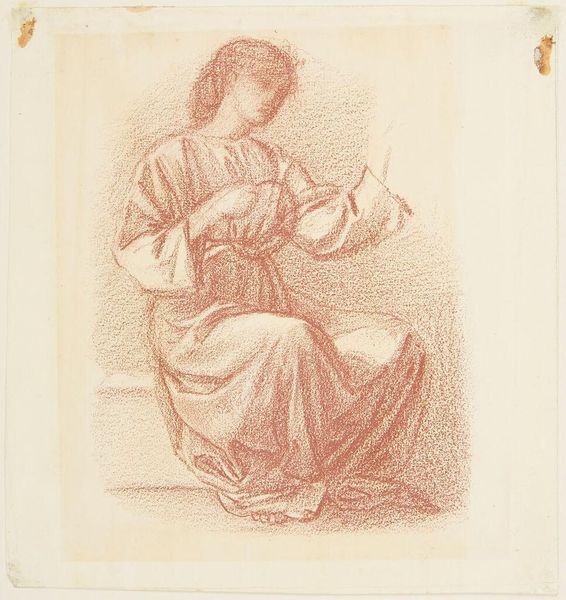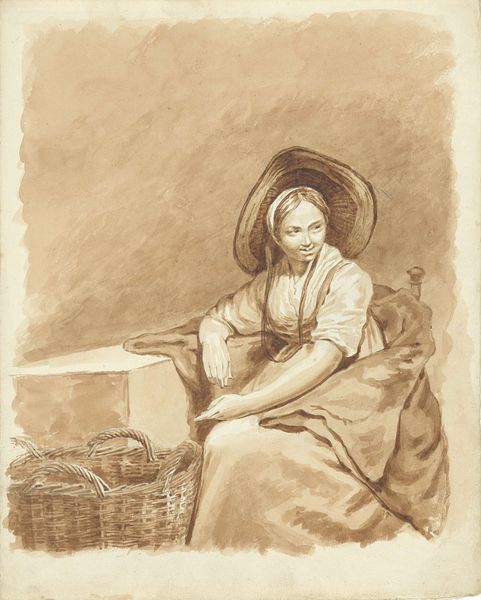
drawing, paper, pencil
#
portrait
#
drawing
#
pencil sketch
#
paper
#
pencil
#
pencil work
#
genre-painting
#
realism
Dimensions: height 129 mm, width 194 mm
Copyright: Rijks Museum: Open Domain
Curator: Here we have "Zittende, rustende vrouw met een mand," or "Seated, Resting Woman with a Basket," a pencil drawing on paper, attributed to Pieter Bartholomeusz. Barbiers and thought to have been made sometime between 1782 and 1837. Editor: My immediate response is tranquility. The soft pencil work and the woman's relaxed pose exude a sense of peacefulness and rest. Curator: Indeed. Genre paintings such as this offer a valuable window into the daily lives of ordinary people during the 18th and 19th centuries, offering us a glimpse into the experiences of working-class women. Consider the socio-economic conditions, and the role of women at the time—artwork such as this offers space for us to engage with broader discourses on labor and class. Editor: Precisely. What I find particularly fascinating is the quiet dignity with which Barbiers depicts her. The delicate lines of her face, the careful rendering of her clothing, elevate her from a simple subject to an individual worthy of attention. Curator: Absolutely. The drawing prompts a reflection on visibility, not only about who has historically been considered worthy of portrayal in art, but about who does the labor on which society is built? I find myself wondering about the stories embedded in the pencil work, reflecting on the sitter’s identity and role within her family, community, and social order. Editor: And that's where its social and historical value lies. It offers a humanizing perspective on a class of people frequently overlooked. It allows us to contextualize, through visual media, the contributions that such communities provide, giving space to understanding more holistically the history of the time. Curator: I find this portrait quite revealing for viewers today, especially since it asks questions around social roles, class consciousness and agency of marginalized figures, allowing engagement and introspection when witnessing these images. Editor: It’s a piece that, while seemingly simple, contains layers of social commentary accessible even now.
Comments
No comments
Be the first to comment and join the conversation on the ultimate creative platform.
